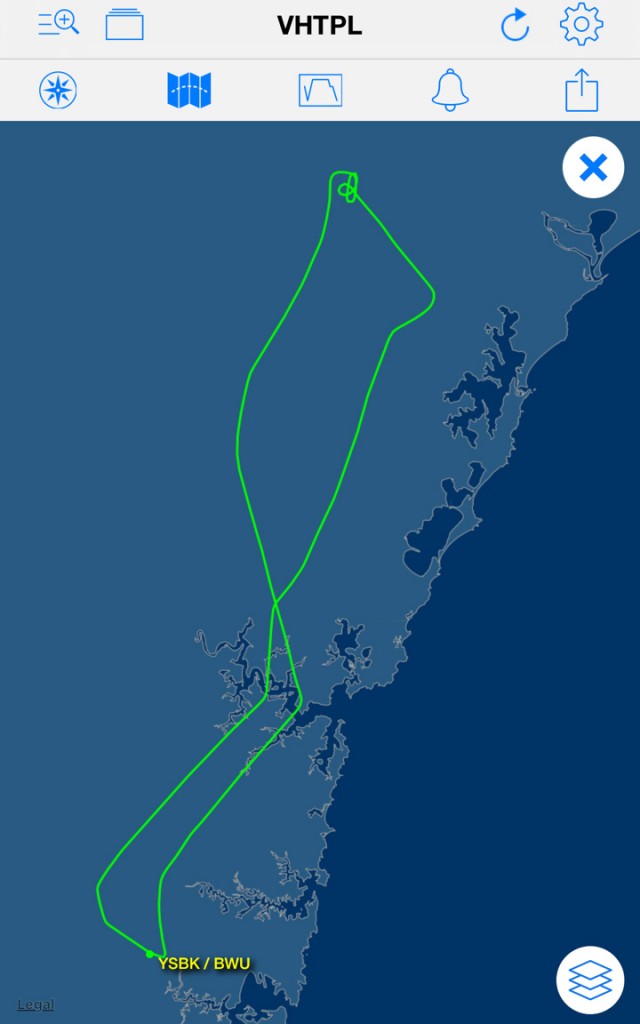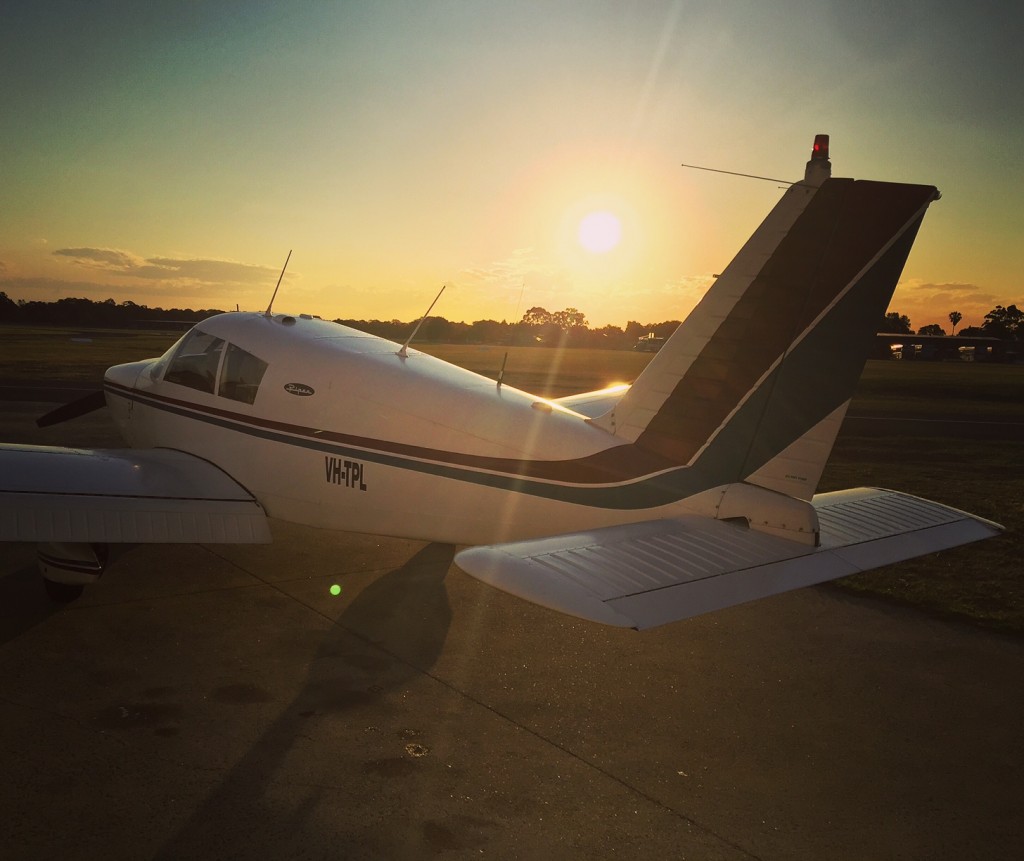Finally! After training for 4 months experiencing unserviceable aircrafts, weather cancellations, flights that only made it as far as the run up bay, ‘severe’ mountain wave turbulence in the dark, high stress levels wearing foggles trying to calculate outbound NDB intercepts, and 3 prior date changes for the test… I finally flew and passed my Night VFR checkride tonight.
I did my training, as usual, with Red Baron in Sydney who have a very thorough schedule for their Night VFR course. In all, I flew 19.7 dual hours at night, plus 1.4 hours solo circuits before being put forward for the test. Our training flights took us to plenty of aerodromes around Sydney with night landings at Goulburn, Bathurst, Cessnock, Scone, and Canberra, plus lots of navaid training around Bindook and Mount McQuoid.
The Night VFR rating is going to be the first time most people are exposed to instrument flying using navaids, it certainly was for me. Learning how to track to and intercept NDB and VOR navaids was probably my favourite part of the course, and something I’m now using on my regular day vfr flights as a secondary method to backup the traditional map based navigation techniques. Plus by demonstrating a competence in using the ADF, VOR and GNSS (which in our case was a Garmin GTN650) in our Piper Cherokee, as well as the Night VFR rating I am now officially endorsed to use NDBs, VORs and a GPS for night VFR flight.

The track for our flight test is shown above. We departed Bankstown for Parramatta, up the Lane of Entry to Patonga before tracking towards the Mount McQuoid NDB. We had a full moon (a supermoon in fact) for the flight, but there was a layer of overcast above us for most of it so it was actually quite dark at times. Add to that a layer of haze from bushfire backburning during the day and the track to McQuoid pretty much gave us no discernible horizon, but a good opportunity to demonstrate flying off the Artificial Horizon on our Aspen EFD1000.
After McQuoid we turned towards Cessnock, planned a top of descent and performed our APL (aerodrome approach) checks before following a Bonanza around the circuit and landing on runway 35.
Departing Cessnock, I circled up to climb above my lowest safe altitude (shown as the squiggly bit at the top of the tracklog) before departing the circuit area and tracking to Lake Macquarie Airport. Around halfway to YLMQ the examiner got me to divert direct back to Bankstown. Fortunately (mainly because my Flight Instructor Matt had told me this so many times before) I had prepared some diversions in advance and had a track and distance from West Maitland VOR to Calga NDB already marked. So I picked up the West Maitland 190 radial, tuned in Calga and tracked back towards home.
From Calga, it’s a short track to Brooklyn Bridge, then visual all the way down the Lane of Entry to Prospect and home to Bankstown.
And I even managed to land nice and smoothly back on RWY 11C at Bankstown before taxying back to base and receiving a firm handshake and congratulations from Bill.
Big sigh of relief.
I’d prepared a lot for this test, and after 3 false starts it was great to hear the words “you’ve passed” and get the signature on my license.
For any other PPL pilots out there looking for a way to sharpen your navigation skills and to get some exposure to instrument flying, I’d thoroughly recommend considering a Night VFR rating. Not only does it lift the limitations for getting home before last light, it’s often a lot smoother flying once the sun has gone down, and if you’re like me your day vfr flying will get better with all the new skills you learn too.
Plus you see shooting stars, which is really really cool.
